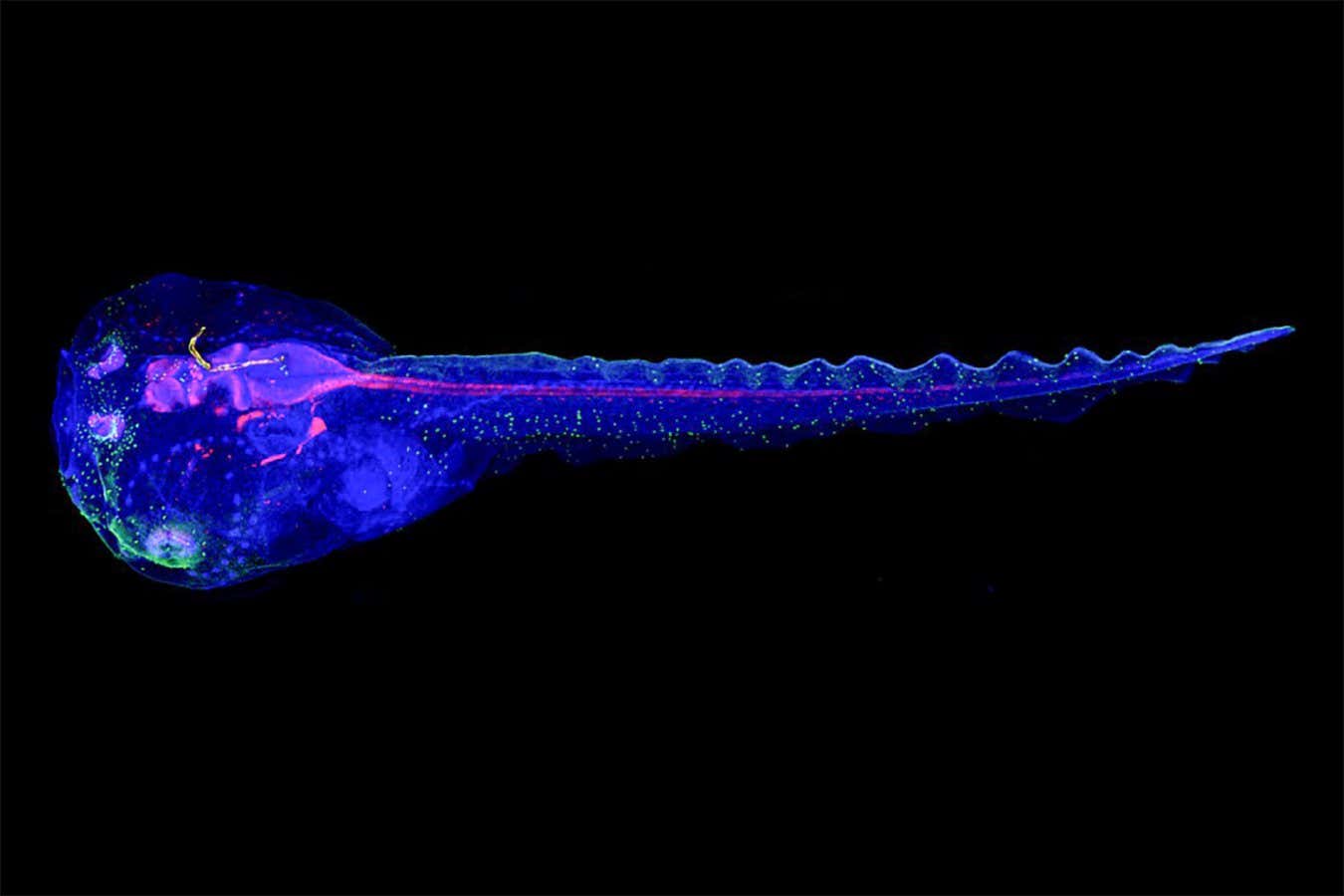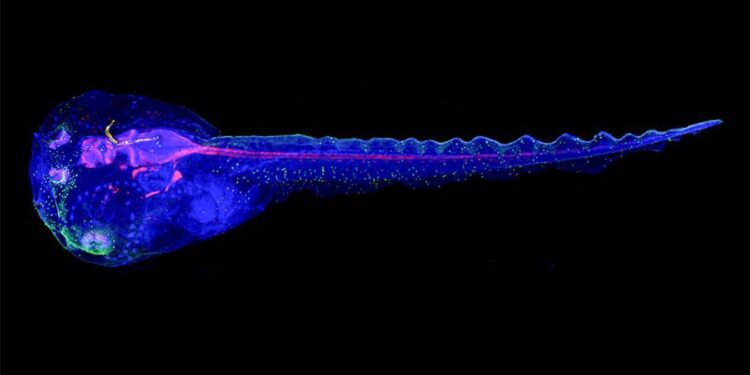
A tadpole, stained with immunofluorescence to visualise its internal anatomy, that had a brain-tracking device implanted in it as an embryo
Hao Sheng et al. 2025, Jia Liu Lab/Harvard SEAS
How does our brain, which is capable of generating complex thoughts, actions and even self-reflection, grow out of essentially nothing? An experiment in tadpoles, in which an electronic implant was incorporated into a precursor of their brains at the earliest embryonic stage, may have edged us closer to answering this question.
Past attempts to peer into neurodevelopmental processes have relied on tools like functional magnetic resonance imaging or hard electrode wires stuck into the brain. But the imaging resolution was too low to be useful, while hard wires damaged the brain too much to offer anything other than a snapshot of a specific developmental moment.
Now, Jia Liu at Harvard University and his colleagues have identified a material – a type of perfluropolymer – whose softness and conformability matches that of brains. They used it to build a soft, stretchable mesh around ultrathin conductors that they then placed onto the neural plate – a flat, accessible structure that forms the neural tube, the precursor to the brain – of African clawed frog (Xenopus laevis) embryos.
As the neural plate folded and expanded, the ribbon-like mesh was subsumed into the growing brain, where it maintained its functionality while stretching and bending with the tissue. When the researchers wanted to measure brain signals, they wired the mesh up to a computer, which displayed the neural activity.
The implant appeared to neither damage the brain nor elicit an immune response, and the embryos developed into tadpoles as expected. At least one went on to grow into a normal frog, says Liu.
“Integrating all the materials and having everything work is pretty amazing,” says Christopher Bettinger at Carnegie Mellon University in Pennsylvania. “This is a great tool that could potentially advance fundamental neuroscience by allowing biologists to measure neural activity during development.”
The team has two main takeaways from the experiment. First, the patterns of neural activity changed as expected as the tissue differentiated into specialised structures responsible for different functions. It has not previously been possible to track how a piece of tissue self-programs into a computational machine, says Liu.
A second mystery was how a regenerating animal’s brain activity changes after amputation. A long-standing idea was that the electrical activity returns to an earlier developmental state, which the team confirmed by using its implant in an experiment involving axolotls.
Liu’s team is now extending the research to include rodents. Unlike amphibians, their development takes place in a uterus, so implantation of the mesh will require in vitro fertilisation and a more complex way of measuring signal transmission than wiring the mesh up to a computer. However, Liu hopes that the insights that could eventually be gained from observing the earliest stages of conditions like autism and schizophrenia will be worth the effort.
Similar devices could potentially be used to monitor neuromuscular regeneration following injury repair and rehabilitation, says Bettinger. “Overall, this is an impressive tour de force that highlights the large potential breadth of applications for ultra-compliant electronics,” he says.
Topics:
Source link : https://www.newscientist.com/article/2483935-cyborg-tadpoles-are-helping-us-learn-how-brain-development-starts/?utm_campaign=RSS%7CNSNS&utm_source=NSNS&utm_medium=RSS&utm_content=home
Author :
Publish date : 2025-06-11 16:16:00
Copyright for syndicated content belongs to the linked Source.








